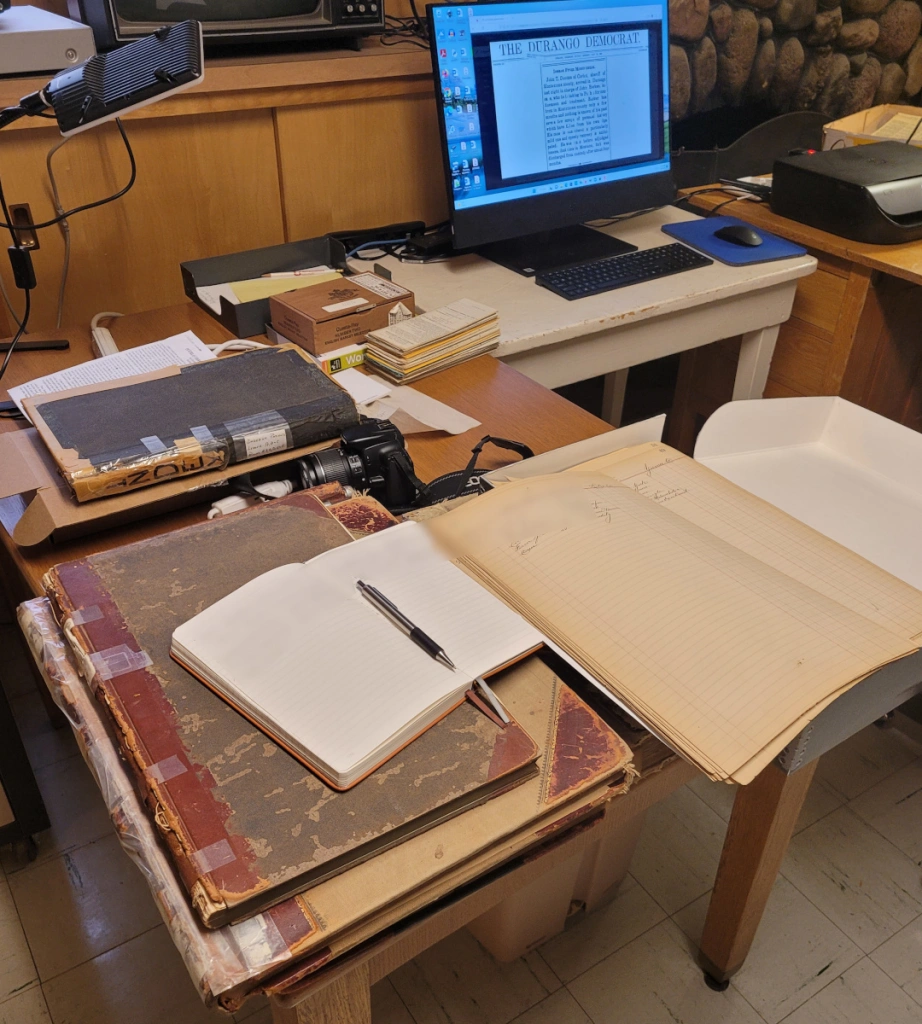Yesterday I was delighted to finally meet Eilene Lyon in person. We have exchanged many emails in the past while researching former patients at the Colorado State Hospital. She also has contributed to our knowledge of Stephen S. Smith, an important figure in the history of Pueblo.
One thing we discussed was how frustrating it can be to try to get good research findings from various organizations. All too often you might have to pay upfront and then … well, receive things you had already found by yourself on sights like FindAGrave and ColoradoHistoricalNewspapers. If you are wanting to do some research on a former patient in the State Hospital, you can start on your own by visiting those sites.
That said, I understand fully that many people find those steps to be difficult–especially the old newspapers. There’s both an art and a science to actually finding what you’re looking for there.
So when someone comes in to our museum (or contacts us online or on the phone), I try to feel them out on what they already have found. I am more than happy to help them with the “easy” stuff. When helping Eilene, however, it was pretty clear that she had already done a lot of the first steps on her own. She was looking for the stuff you can NOT find online, and that’s what I want to discuss here.
Going Beyond the Basics
You can find tips for researching relatives that have been in institutions for the mentally ill (their term, not mine) in guides posted by The National Archives, Family History Daily, and Julianne Mangin. They have some good advice and prepare you for the difficulty of the task.
However, as you start pursuing online information, you may get frustrated. For each link you find that seems to have some value, you will no doubt come across several others that simply want to get you to buy a membership or pay in advance for … whatever it is they’re selling. Be careful!

We have so many records in our archives that simply are not available anywhere else except in the old books they are written in. While it would be nice to have all of those records searchable in digital format, we simply don’t have the resources to accomplish that in the foreseeable future.
So if you’re having trouble finding things online, or have found all you can and want help in our archives, contact us!

I’m looking for information on Ida Fay (Ehmsen) Ballinger. She was born October 1892 in Mead, Colorado. She died January 9, 1944. I have the obit and place of burial. I also know the story of her parents. What I’m looking for is the commitment date, commitment reason and cause of death. Any other information would be appreciated.
LikeLike
Hi Jon,
Try calling the museum to get set up with Richard, who does historical research. You and him can discuss his doing research for you on this. He’s usually more than happy to help people out. Call on a Tuesday or Saturday to talk to him, or leave a message and he’ll return it.
–CSHM Staff
LikeLike
I’m not sure I have the correct number. I have called many times on a couple different Tuesdays between 10-4 without a pickup. I was using (719)543-2012. Is that the correct number? Or is there an email address I could use?
LikeLike
Hi Jon,
So sorry about all of this. We want it to be easy to contact us. I will check our website and make a change to the correct number, if necessary. You can use our on-site number 719_546-4004 and we will be there tomorrow. Once we talk we can get you an email address I will use to send you research findings, etc.
Thanks for your patience!
–Richard
LikeLike
Thanks Richard, I’ll call tomorrow between 10-4 Mountain time.
LikeLike